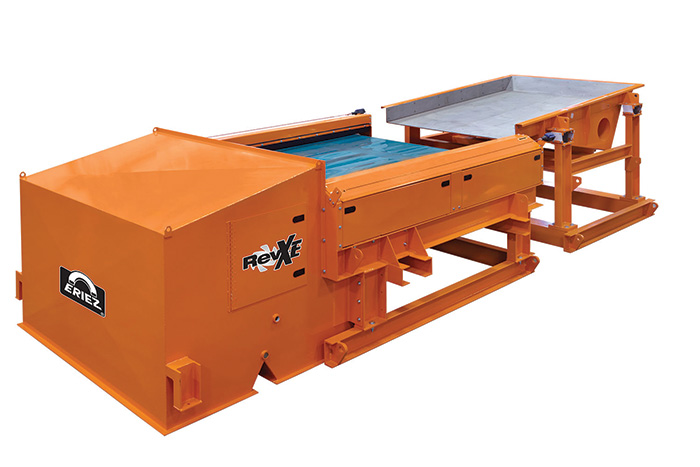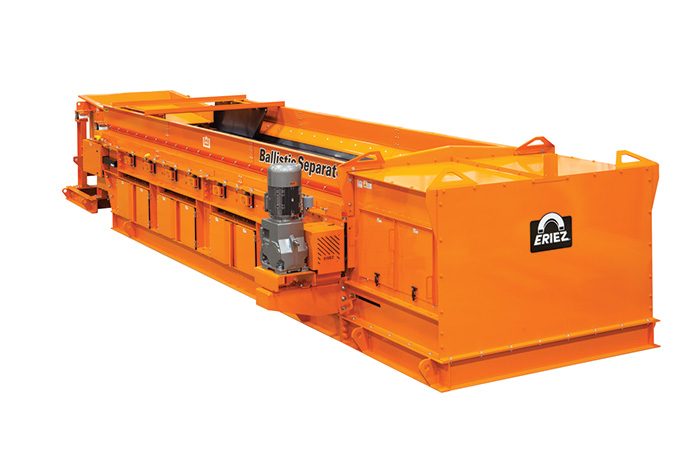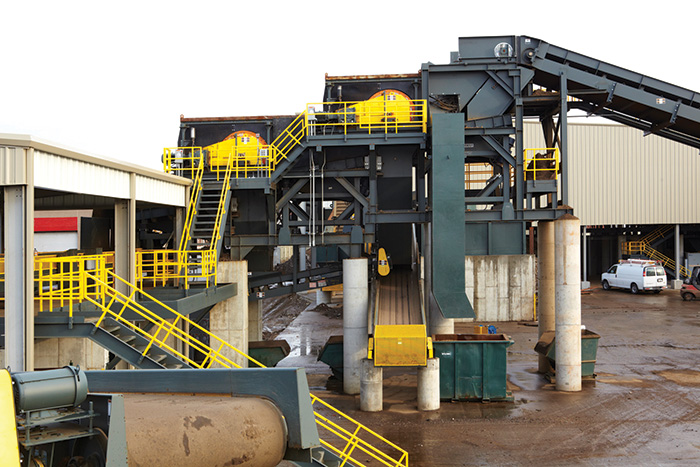End-to-end ferrous and nonferrous recovery solutions, holds the promise of maximizing the value of scrap metal. These crucial solutions ensure that valuable ferrous and nonferrous metals are efficiently extracted and sorted into separate recycling streams, contributing to a more efficient and profitable recycling process.
By Mike Shattuck
In the realm of recycling, efficient material recovery serves as the linchpin of sustainability and financial viability. Today’s leading manufacturers provide a comprehensive range of solutions aimed at transforming the processing of ferrous and nonferrous materials. From the initial stages of separation to the intricate sorting of materials, these innovative systems provide unmatched performance and increased profitability for recycling operations on a global scale.
Complete Ferrous and Nonferrous Processing
The commitment to optimizing recovery and grade lies at the heart of end-to-end recycling systems. Progressive manufacturers are dedicated to elevating industry standards and delivering superior results across the recovery/grade curve by seamlessly integrating ferrous and nonferrous processing. To illustrate the recovery capabilities possible with innovative recycling equipment, let’s explore a virtual scrap yard.


Ferrous Processing Poker Sorting
We begin with ferrous processing. The first step is removing long, troublesome pokers that can damage downstream equipment if left in the feed. Magnetically extracting these obstructions early in the process eliminates the need for handpicking later on, streamlining operations, enhancing efficiency, and protecting downstream conveyors and other equipment.
For this stage of the recovery process, innovative solutions remove rod-like pieces, typically over 24 inches in length, referred to as pokers. Pokers include automotive components like leaf springs, tie rods, and axle parts.
By using a special magnetic drum positioned at the end of the shredder discharge belt, pokers exit the shredder, and guides on the inclined conveyor align them parallel to the flow. When they reach the conveyor end, the pokers extend beyond it and are magnetically pulled over into a chute or conveyor belt, where they are collected in a bin or bunker.
Scrap Drums
Next in the virtual scrap yard are scrap drums. A traditional permanent and electro scrap drum along with a permanent rare earth drum are great solutions. The Rare Earth drum uses a permanent magnetic fixture, providing advantages over electromagnetic drums, such as a wider pick-up zone and more consistent strength throughout the transfer and carry-over zones. Due to its powerful permanent magnetic circuit, the electro scrap drum can collect heavy and hard-to-retrieve ferrous objects, including large spherical objects known as “meatballs,” with an impressive 99 percent recovery rate and a 40 percent increase in strength compared to conventional scrap drums. The drum’s expansive pick-up zone, coupled with edge-to-edge strength, ensures unparalleled effectiveness in capturing ferrous materials of all sizes and shapes, setting a new benchmark for performance in scrap metal processing and recycling operations.
Ballistic Separators
Now it is time to separate the recovered materials. A ballistic separator can efficiently separate iron-rich ferrous from much of the mixed metals post-drum magnet flow, producing a premium low-copper shred. This type of separator delivers two distinct fractions: a premium low-copper ferrous product (in the range of 0.16-0.20 percent Cu) and a traditional #2 shred. A ballistic separator, combined with extracting long, troublesome pokers, and a permanent rare earth magnetic drum, improves the entire process. Not only does this process recover more ferrous and concentrate 75 percent of the post-drum magnet flow into a low-copper premium shred, but it also reduces handpicking and helps increase the recovery of copper-bearing materials.
Dynamic Pulley Separators
Dynamic Pulley Separators (DPS) are designed to liberate entrapped steel and weakly magnetic fines from recycled materials. This equipment increases profitability by improving downstream separation and the grade of non-ferrous metals. The versatile dynamic pulley separator is ideally suited for recovering ferrous fines from ASR and Waste-To-Energy bottom ash.
Positioned upstream from an eddy current separator, a high-strength dynamic pulley separator uses a Rare Earth permanent magnet pulley rotating at an off-set speed from the belt, creating an agitating magnetic field. This improves ferrous recovery or removal and allows nonferrous material to continue to downstream equipment.
For ASR applications, a dynamic pulley separator can be used with weaker magnetic drums to recover ferrous nuggets from the ASR stream. Discarded fines material that has passed through the initial screening process goes to a dynamic pulley separator for removal of ferrous. The nonferrous fraction can then be further processed on an eddy current separator.
The agitating action generated by a dynamic pulley separator allows for fine ferrous to be recovered while freeing up valuable nonferrous metals to be recovered downstream. A dynamic pulley separator helps to debulk and reduce material burden upstream of eddy current separators and other downstream nonferrous separation equipment, providing improved Zorba grade and recovery.
A dynamic pulley separator is also effective for ferrous removal from plastics, rubber and similar materials. These separators provide a high-powered agitating magnetic field to pull metal contaminants out of the product flow, improving purity and protecting downstream equipment from damage.

Nonferrous Processing Eddy Current Separators
The first stop in nonferrous processing is eddy current separators. Permanent magnetic and eddy current separators feature improved magnetic circuits with rare earth magnetic material for stronger eddy currents. Eddy Current Separators incorporate an eccentrically mounted magnetic rotor within a non-conductive shell for the separation of nonferrous metals. The rare earth rotor produces a powerful focused field at the end of the belt. Several advantages can include a cantilevered frame design for 10-minute conveyor belt changes, rack and pinion splitter adjustment for simple and precise splitter placement for optimum separation, large access panels for easy maintenance access, and a space-saving, compact design. Additionally, the direct drive rotor and direct drive conveyor streamline the separation process.
Eddy current separators are available in multiple rotor configurations and frequency changes for maximum recovery of products large and small. An eight-pole design is ideal for large nonferrous with a deep burden of material. The deeper field reaches through the burden of material and provides maximum recovery. For smaller products under 1 inch in size, the 22-pole configuration is ideal for harder to get smaller nonferrous. Micro-fines require more poles and much higher frequency changes between the poles to get a recovery of nonferrous as small as 2 mm. This is where the UHF (Ultra High Frequency) eddy comes into play. With 32 poles and 4500 RPM, UHF will recover material missed by traditional eddy currents, including bare copper wire.
Maximizing Value
The future of recycling, with a focus on end-to-end ferrous and nonferrous recovery solutions, holds the promise of maximizing the value of scrap metal and minimizing waste destined for landfills. These crucial solutions ensure that valuable ferrous and nonferrous metals are efficiently extracted and sorted into separate recycling streams, contributing to a more efficient and profitable recycling process. | WA
Mike Shattuck is Market Manager, Metals Recycling, for Eriez. With nearly two decades at Eriez, He has been instrumental in growing and advancing the company’s recycling division. His contributions have been pivotal in the introduction of innovative products aimed at pushing the boundaries of recovery and grade improvements. Mike’s visionary leadership and deep expertise have helped solidify Eriez’ position as a global leader in recycling. To view an animation to learn more about end-to-end recycling solutions, visit Eriez End-to-End Metal Recovery Solutions: Virtual Scrap Yard – YouTube: www.youtube.com/watch?v=b0xPN-Bqrts. For more information, visit www.eriez.com.
